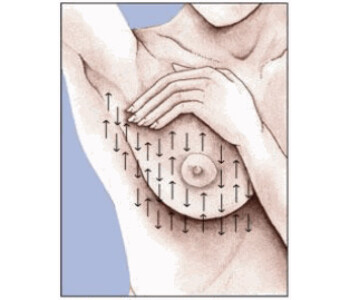Medical professionals recommended that women perform monthly breast self-exams for years as an early screening tool for breast cancer. More recent medical studies; however, did not discover any major benefit for self-exams. Women who performed self-exams are actually more likely to get false positives, leading to unnecessary worry and fear. This caused the American Cancer Society and the Susan G. Komen Foundation to change their guidelines and stop recommending breast self-exams as an official screening tool for breast cancer.
Other breast cancer groups; however, continue recommending breast self-exams as a way for women to become more familiar with their bodies and monitor their overall well-being. Adam & Eve recommends you discuss the topic with your personal physician before deciding whether to start or stop performing breast self-exams.
If you decide to start or continue performing breast self-exams, John Hopkins Medicine recommends performing a breast self-exam once a month. Note that breast self-exams are not intended to replace regular doctor visits or mammograms. The National Breast Cancer Foundation suggests you perform a breast self-exam by:
1. Start in the shower by placing the pads of your fingers on the outer edge of your breast. Move your fingers in a circular motion around your entire breast while slowly working inward. Start off with gentle pressure and then repeat using medium pressure and then firm pressure. After examining both your breasts, lift your arms and probe your underarms as well. Pay special attention to any area that feels unusually thick or something that feels like a lump or a hardened knot.
2. Visually inspect your breasts in a large, well-lit mirror. Start with your hands pressed firmly down on your hips. Examine your breast size, skin color and texture for any unusual changes or abnormalities. Lift your arms up and then visually inspect your breasts again.
3. Lie down on a flat surface. This spreads the breast tissue over your chest as thinly as possible, making it easier to feel any irregularities. Use small circular motions to inspect your entire breast and underarm. And squeeze your nipple to check for any unusual discharge.
Sources
American Cancer Society
Susan Komen Foundation
National Breast Cancer Foundation
John Hopkins Medicine




